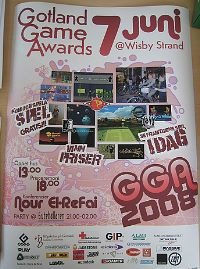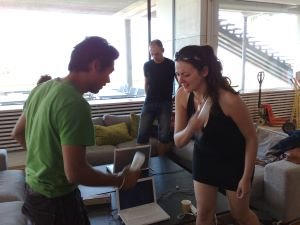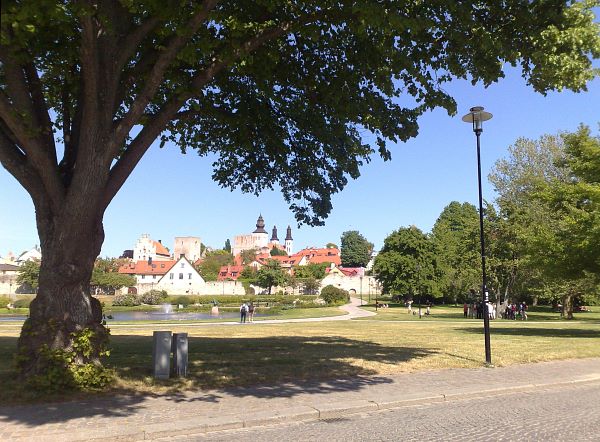Ameland, the Netherlands
The Northern College of Leeuwarden, in conjunction with the province of Friesland and several other funding agencies, decided to put on a festival -- actually more of a game jam -- for game development students in the region. I was invited along as an instructor, coach, and juror. It all took place on an island named Ameland off the north coast of the Netherlands -- hence, Gameland and the joystick/lighthouse logo, which I think is very clever. The whole thing lasted five days, and it was a ton of fun.

We had sixteen teams of students from various institutions, along with their instructors. Each team consisted of from four to six people, and the organizers tried to be sure that there was one programmer and one artist on each team, and a sound designer who was shared between two teams. It was wonderful to have all the sound and music people -- most game jams never have enough sound people, and the quality suffers as a result.
Each team had to create a quasi-educational game in Flash and ActionScript, suitable for potential installation in the island's nature museum. On Monday we all headed to the island by ferry from the mainland, moved into our bungalows, and heard a lecture about the island's natural history.
Tuesday morning I gave my Fundamental Principles of Game Design lecture and handed out the worksheets I use in my workshop. I wasn't running a real workshop but I thought they would find them handy. My lecture was followed by one from an art director from NCSoft, Daniel Dociu (pronounced DOE-shu, he's Romanian by birth). After that the students got to work, while the organizers took us instructors on a seal-watching trip -- seals come to the island periodically. It was great to see them in their natural habitat.

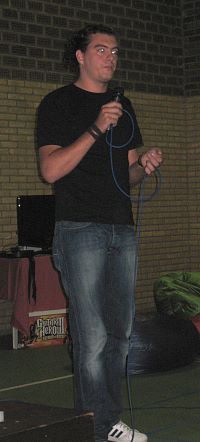
Tuesday evening each team presented its initial concept to the whole group, and we instructors commented on them.
Wednesday morning there were more lectures by other folks, and more work in the afternoon. Each of us among the instructors and organizers had been given two teams to "coach" and I visited mine two or three times a day to see how they were getting on and offer advice. I also talked to anybody else who wanted my assistance -- we weren't supposed to be partisan about "our" teams.
Most of the other guest speakers were art people rather than game designers -- in fact, I think I was the only game designer, which meant that I got a lot of questions. My old friend and fellow freelance designer Noah Falstein was supposed to come, but couldn't make it work with his schedule, unfortunately. I hope to see him there next year.
There was some very high-level talent among the artists. Their lectures often consisted of showing how to do things in Maya or ZBrush, although for the purposes of the contest the students were only supposed to make a 2D game.
By Thursday everyone was deep down in it. I gave another lecture in the morning, Emerging Issues in Game Design, which was very well received... probably because among other things I talked about sex in games!
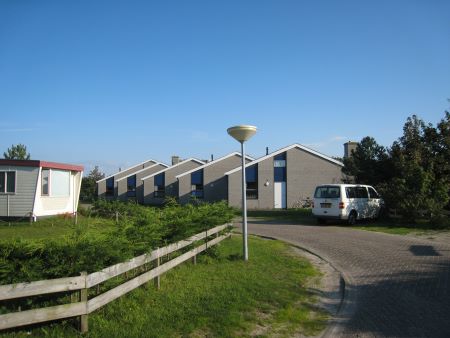
There was quite a variety among the games. Many were simple action games involving racing seals or feeding birds against the clock. They all had an educational theme, so in one of the bird games, you had to make sure the bird that you chose to control ate the correct kind of food for its species, or it would lose energy and fall out of the sky. Others were economic simulations, involving balancing the issues of tourism, pollution, and wildlife on the island. (Wildlife brings tourists; tourists cause pollution; pollution drives the wildlife away.)
Meals were taken in a big central hall, where all the students got a chance to mingle and relax for a bit. Thursday night there was a barbecue for the instructors. Large quantities of beer, mostly Heineken and Grolsch, were consumed at all times of the day and night. Everybody was very well-behaved, though -- the students took the task quite seriously and really put their backs into it.
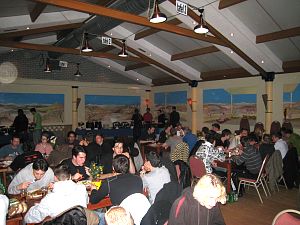
Friday morning all the teams turned in their work on USB memory sticks and then we judges had to rate them. There was no formal plan for choosing a winner, and we were in a hurry (we had to catch the boat off the island at 2:30). I proposed that each juror just each rate every game from 1 to 10 and we add up the numbers to see who got the most points. This met with everyone's approval and we got to work. It's tough looking at 16 games quickly, but I think we gave each one a fair shot, and the jury was 7 people. Every game but one included a playable demo in Flash, and many included PowerPoint presentations or design documents to explain the game as well.
In the end there was one clear winner that stood head and shoulders above the rest. "Little Sand Ameland" was a game about protecting the island from the sea, which tends to wash it away. As the player you have to defend a sand castle for a period of time by pushing sand in front of it -- but the sand's behavior is a bit peculiar and requires care to figure out. The graphics were charming, the sounds ideal, and the whole thing was very nearly a finished game. The team that built it was a combination of men and women, and included the only black participants in the contest -- it might almost have been chosen for PR reasons, but they won fair and square and everyone recognized their quality of their work immediately.
I was selected to announce the winners aboard the boat home. The Dutch being mild-mannered and low-key, I think they wanted the loud American for the job. Anyway, there was a good deal of cheering, and each of the jurors got a chance to say something about the winner.
The winning team took away 1000 Euro each, so they were pretty pleased. We heard them talking about what they were going to do with the money -- new laptops, school books, audio gear...
After that the boat docked and we all went our separate ways. I rode back to Amsterdam with Alessandra van Otterlo, one of the organisers, and two other speakers -- Daniel and Horia Dociu from NCSoft, who had come over from Seattle to take part.
Many thanks to Tim Laning, the father of the idea, who did a lot of the fundraising and pre-production; Gerdien Dijkstra, who was the primary organizer and queen bee of the whole event; Alessandra van Otterlo, Marjoleine Timmer and Ivo Fokke of the NLGD Festival of Games, who did a lot of the work on the ground; and to Guido Swildens, Jeroen Nauta, and Wessel van der Es of the Northern College of Leeuwarden who provided beer, Internet service, and excellent company throughout. Special thanks and a hug to Alessandra, who picked me up, drove me around, and generally looked after me throughout.
I'm looking forward to next year!
 I went back again this year to the International Forum on Animation Technologies, which in French has the acronym FITA. It was their tenth year, so they were justifiably proud of all that they have accomplished. I don't have a single picture, unfortunately -- like last year, I only stayed one day, and spent almost all the time giving my own workshop on interactive storytelling.
I went back again this year to the International Forum on Animation Technologies, which in French has the acronym FITA. It was their tenth year, so they were justifiably proud of all that they have accomplished. I don't have a single picture, unfortunately -- like last year, I only stayed one day, and spent almost all the time giving my own workshop on interactive storytelling.
 For the second time, I had the privilege of delivering the opening keynote at the Swansea ANimation Days festival -- at least, the Game Days part of it, which comes first. The last time I was there was in 2006, and the festival just seems to keep getting bigger and better. In addition there was dinner at the house of the Lord Mayor of Swansea, complete with the Lord Mayor himself, and his wife, in attendance, wearing their gold chains of office.
For the second time, I had the privilege of delivering the opening keynote at the Swansea ANimation Days festival -- at least, the Game Days part of it, which comes first. The last time I was there was in 2006, and the festival just seems to keep getting bigger and better. In addition there was dinner at the house of the Lord Mayor of Swansea, complete with the Lord Mayor himself, and his wife, in attendance, wearing their gold chains of office.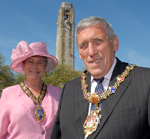 Gold chains of office are something we don't do much in the United States. Just as the Queen is a constitutional monarch, so the Lord Mayor is a constitutional mayor -- the job only lasts for a year and I think his duties are strictly ceremonial. Still, he gets to live in a pretty nice house with some amazing silver dishes. I didn't ask what he thought about having a bunch of animation geeks and game developers to dinner, but he seemed gracious about it.
Gold chains of office are something we don't do much in the United States. Just as the Queen is a constitutional monarch, so the Lord Mayor is a constitutional mayor -- the job only lasts for a year and I think his duties are strictly ceremonial. Still, he gets to live in a pretty nice house with some amazing silver dishes. I didn't ask what he thought about having a bunch of animation geeks and game developers to dinner, but he seemed gracious about it.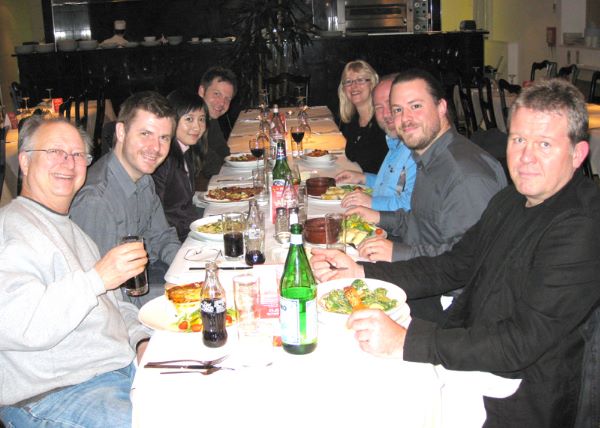

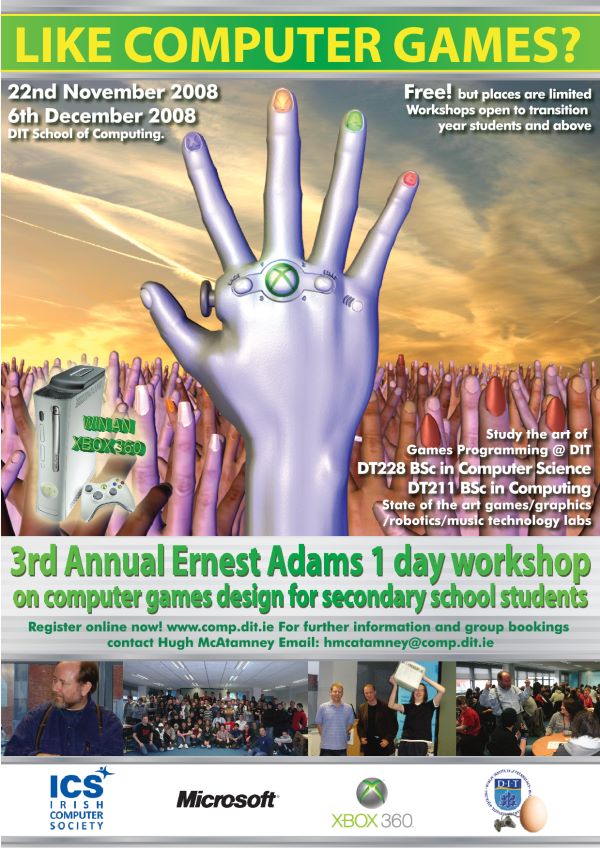
 A couple of years back I met a cool professor named
A couple of years back I met a cool professor named 



 Last May I went to the
Last May I went to the 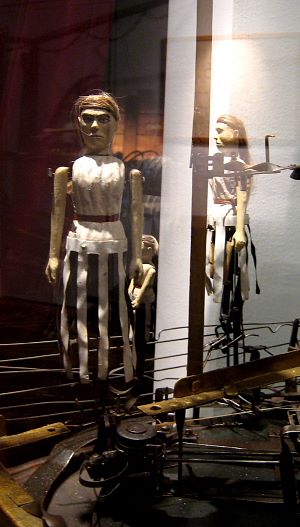 Elzinga was a mechanical genius, but he was poor. He lived alone with his mother, had no job, and had to scrounge parts wherever he could find them -- mostly from the blacksmith's forge and the bicycle shop. He shut himself in his room, and for three years, he worked on his amazing invention. When it was done, it was one of the wonders of the Netherlands, and it was put on display all over the country. Originally it had to be cranked by hand, and it ran for 35 minutes continuously. To reset it, it has to be cranked backwards for 35 minutes!
Elzinga was a mechanical genius, but he was poor. He lived alone with his mother, had no job, and had to scrounge parts wherever he could find them -- mostly from the blacksmith's forge and the bicycle shop. He shut himself in his room, and for three years, he worked on his amazing invention. When it was done, it was one of the wonders of the Netherlands, and it was put on display all over the country. Originally it had to be cranked by hand, and it ran for 35 minutes continuously. To reset it, it has to be cranked backwards for 35 minutes!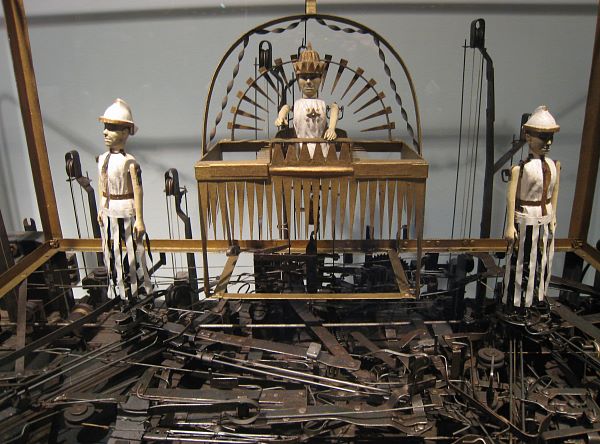
 Wow, did I have fun at Hedmark University College in Norway. I met the nice folks there when I went to the JoinGame conference a few months ago, and they seemed really interested in a visit. This week I got the opportunity. I flew to Oslo and then took the train to Rena.
Wow, did I have fun at Hedmark University College in Norway. I met the nice folks there when I went to the JoinGame conference a few months ago, and they seemed really interested in a visit. This week I got the opportunity. I flew to Oslo and then took the train to Rena. The college has three campuses, and this one is in a small but very pretty town in eastern Norway. The province of Østerdalen is a mountainous area used by the military for special forces training -- lots of lakes and rivers. All the leaves were turning color and there was a decided chill in the air.
The college has three campuses, and this one is in a small but very pretty town in eastern Norway. The province of Østerdalen is a mountainous area used by the military for special forces training -- lots of lakes and rivers. All the leaves were turning color and there was a decided chill in the air. 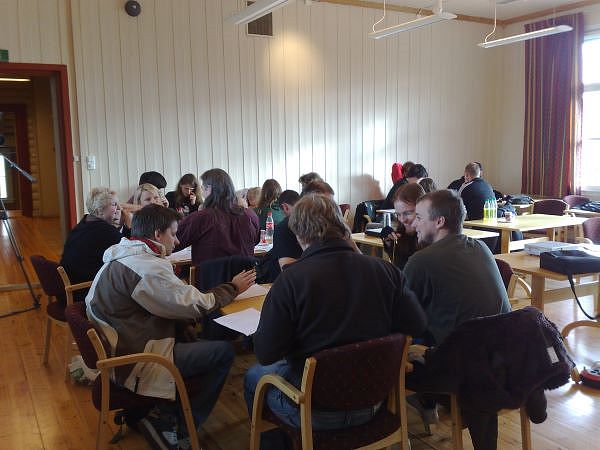
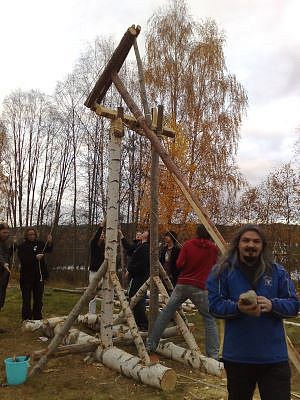 One of the highlights of the visit for me was getting to see, and indeed release, a small home-made trebuchet. If you're not a fan of medieval siege engines this probably won't mean much to you, but in my experience a lot of computer people love them. This one was built in a single day by one of the faculty, Simon McCallum, a kiwi whom I met four years ago at the Fuse conference in Dunedin, New Zealand.
One of the highlights of the visit for me was getting to see, and indeed release, a small home-made trebuchet. If you're not a fan of medieval siege engines this probably won't mean much to you, but in my experience a lot of computer people love them. This one was built in a single day by one of the faculty, Simon McCallum, a kiwi whom I met four years ago at the Fuse conference in Dunedin, New Zealand.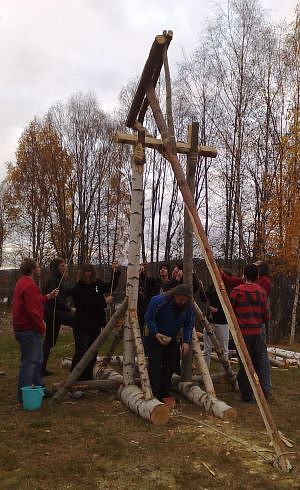 and the other rises up and slings the projectile. The later and more famous version of the trebuchet used very heavy (many tons) weights to throw stones weighing hundreds of pounds. Simon's is an earlier design, the traction trebuchet. The crew simply pull down on ropes to sling the arm. The advantage of this approach is that all the energy is in the human beings -- the device is completely safe to its users provided that the sling is adjusted properly. For maximum distance, the projectile should leave the sling heading upwards at a 45 degree angle.
and the other rises up and slings the projectile. The later and more famous version of the trebuchet used very heavy (many tons) weights to throw stones weighing hundreds of pounds. Simon's is an earlier design, the traction trebuchet. The crew simply pull down on ropes to sling the arm. The advantage of this approach is that all the energy is in the human beings -- the device is completely safe to its users provided that the sling is adjusted properly. For maximum distance, the projectile should leave the sling heading upwards at a 45 degree angle.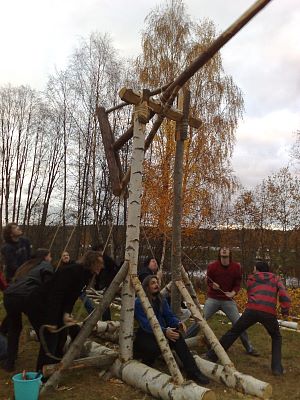 A steady rain of heavy rocks would unnerve anyone.
A steady rain of heavy rocks would unnerve anyone. The Northern College of Leeuwarden, in conjunction with the province of Friesland and several other funding agencies, decided to put on a festival -- actually more of a game jam -- for game development students in the region. I was invited along as an instructor, coach, and juror. It all took place on an island named Ameland off the north coast of the Netherlands -- hence, Gameland and the joystick/lighthouse logo, which I think is very clever. The whole thing lasted five days, and it was a ton of fun.
The Northern College of Leeuwarden, in conjunction with the province of Friesland and several other funding agencies, decided to put on a festival -- actually more of a game jam -- for game development students in the region. I was invited along as an instructor, coach, and juror. It all took place on an island named Ameland off the north coast of the Netherlands -- hence, Gameland and the joystick/lighthouse logo, which I think is very clever. The whole thing lasted five days, and it was a ton of fun. We had sixteen teams of students from various institutions, along with their instructors. Each team consisted of from four to six people, and the organizers tried to be sure that there was one programmer and one artist on each team, and a sound designer who was shared between two teams. It was wonderful to have all the sound and music people -- most game jams never have enough sound people, and the quality suffers as a result.
We had sixteen teams of students from various institutions, along with their instructors. Each team consisted of from four to six people, and the organizers tried to be sure that there was one programmer and one artist on each team, and a sound designer who was shared between two teams. It was wonderful to have all the sound and music people -- most game jams never have enough sound people, and the quality suffers as a result.
 Tuesday evening each team presented its initial concept to the whole group, and we instructors commented on them.
Tuesday evening each team presented its initial concept to the whole group, and we instructors commented on them. There was quite a variety among the games. Many were simple action games involving racing seals or feeding birds against the clock. They all had an educational theme, so in one of the bird games, you had to make sure the bird that you chose to control ate the correct kind of food for its species, or it would lose energy and fall out of the sky. Others were economic simulations, involving balancing the issues of tourism, pollution, and wildlife on the island. (Wildlife brings tourists; tourists cause pollution; pollution drives the wildlife away.)
There was quite a variety among the games. Many were simple action games involving racing seals or feeding birds against the clock. They all had an educational theme, so in one of the bird games, you had to make sure the bird that you chose to control ate the correct kind of food for its species, or it would lose energy and fall out of the sky. Others were economic simulations, involving balancing the issues of tourism, pollution, and wildlife on the island. (Wildlife brings tourists; tourists cause pollution; pollution drives the wildlife away.) Friday morning all the teams turned in their work on USB memory sticks and then we judges had to rate them. There was no formal plan for choosing a winner, and we were in a hurry (we had to catch the boat off the island at 2:30). I proposed that each juror just each rate every game from 1 to 10 and we add up the numbers to see who got the most points. This met with everyone's approval and we got to work. It's tough looking at 16 games quickly, but I think we gave each one a fair shot, and the jury was 7 people. Every game but one included a playable demo in Flash, and many included PowerPoint presentations or design documents to explain the game as well.
Friday morning all the teams turned in their work on USB memory sticks and then we judges had to rate them. There was no formal plan for choosing a winner, and we were in a hurry (we had to catch the boat off the island at 2:30). I proposed that each juror just each rate every game from 1 to 10 and we add up the numbers to see who got the most points. This met with everyone's approval and we got to work. It's tough looking at 16 games quickly, but I think we gave each one a fair shot, and the jury was 7 people. Every game but one included a playable demo in Flash, and many included PowerPoint presentations or design documents to explain the game as well.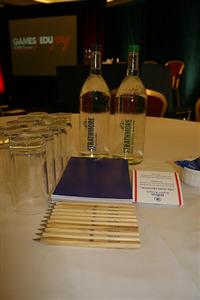 I wangled myself a speaking invitation to
I wangled myself a speaking invitation to 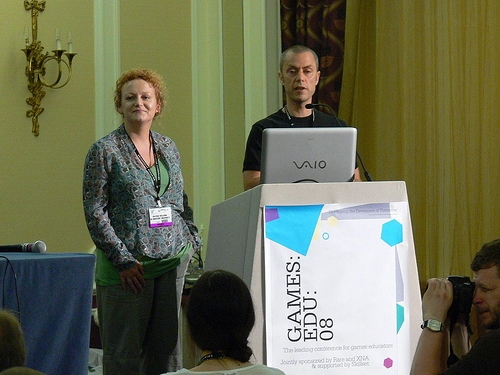
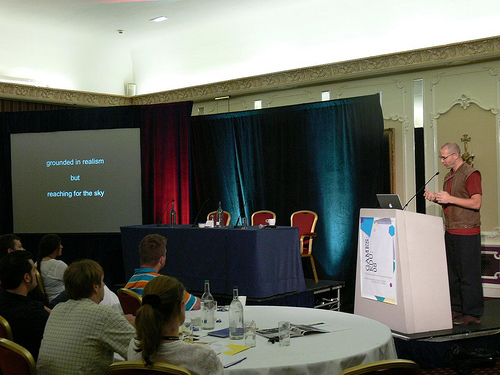
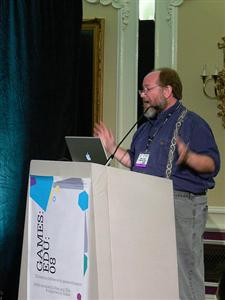 Finally, here's a picture of me doing the very thing I said in my lecture that instructors should not tolerate: waving my hands!
Finally, here's a picture of me doing the very thing I said in my lecture that instructors should not tolerate: waving my hands!